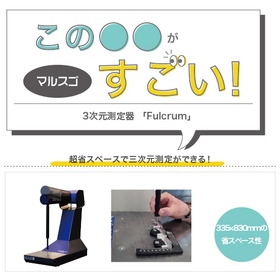Problem-Solving Materials: Utilizing 3D Data 16 | Strength of FDM Printed Models
How to incorporate "carbon materials" to solve the strength issues of 3D printers? A resource for identifying and solving challenges in the production field.
This document is a series that proposes solutions to various challenges faced in production sites, from identifying issues to finding solutions. In the "3D Data Utilization Edition," we will introduce various solutions to manufacturing challenges through the use of 3D data. [Document Overview] Among 3D printers, FDM (Fused Deposition Modeling) machines are easy to use and implement, and they have become widespread in many production sites. In recent years, elements that were considered weaknesses of FDM, such as the variety of materials and improvements in model quality, have gradually been addressed. However, the challenge posed by FDM technology is the "insufficient strength of printed models." This document compiles the issue of strength deficiency that most FDM 3D printers face and explains the advantages of carbon materials with "continuous fibers." Additionally, we will introduce 3D printers that adopt a unique printing method based on FDM. *You can download the document using the button below.
basic information
■Vol.16 "Strength of Printed Models" - 3D printers selected according to their applications - Insufficient strength due to fill density - How to effectively improve strength? ■Vol.16-1 "Use of Carbon Composites" - "Composer" series 3D printers capable of printing with carbon materials - Strengthening printed models with carbon composites - Automatically creating print data that utilizes continuous carbon fiber materials
Price range
Delivery Time
Applications/Examples of results
Please use this as a hint for those struggling with the strength of FDM 3D printed models.
catalog(1)
Download All CatalogsRecommended products
Distributors
【Proposing the latest and standard equipment for manufacturing through a system】 We are the only company in Japan that can provide a comprehensive proposal for all the equipment necessary for manufacturing, including machine tools, CAD/CAM, 3D printers, 3D scanners, and other 3D digital production tools and instruments. 【Peace of mind with technical support after installation】 With our strength in technical support, we can resolve any concerns of users after installation, such as operation assistance, troubleshooting, and maintenance, all through a single point of contact. 【Extensive display of actual machines】 We have various actual machines set up, allowing you to clarify your operational image through demonstrations and tours before making a decision to implement. 【Manufacturer capabilities】 Additionally, if there are no products with the features desired by users, or if there are products with good features but weak sales power, we will leverage our manufacturer capabilities to release them as uniquely planned in-house products.



















































